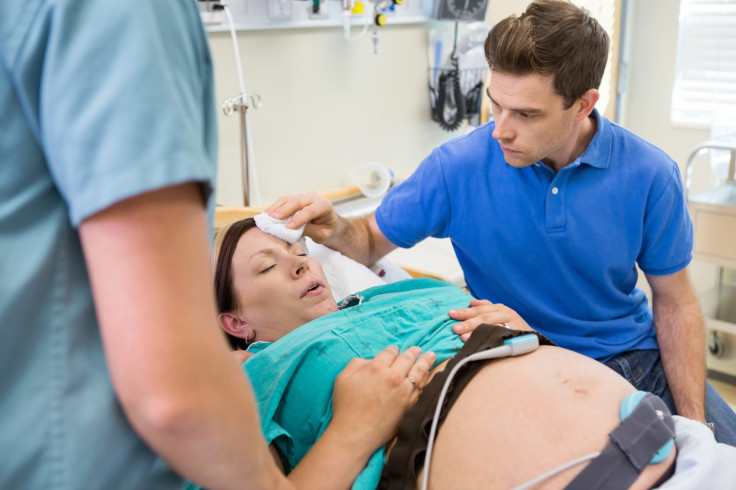Giving Birth Around Partners Intensifies Pain Emotionally Distant Women Feel

Having the father present during childbirth may actually do more harm than good for the mother, according to a new study published in the journal Social Cognitive and Affective Neuroscience.
In the study, researchers out of the King’s College London gave 39 women a “pinprick” laser on their fingers, then asked them to report their feelings of pain. They found that the women had lower pain tolerance if their partners were present, particularly for the women who avoided closeness in their relationships.
“Individuals who avoid closeness may find that the presence of others disrupts their preferred method of coping with threats on their own,” Dr. Katerina Fotopoulou, senior author of the study, said in a press release. “This may actually maintain the threat value of pain and ultimately heighten individual’s pain experience.”
Each woman who received a moderately painful laser pulse on her finger was asked to rate the intensity of the pain. The researchers, in addition, measured how their brains spiked in electrical activity during the prick. Women who reported they avoided being close and intimate with their partners were more likely to show higher pain feelings and also more brain activity when they experienced the prick.
“We were interested in the role of individuals’ patterns of seeking or avoiding closeness in their relationships,” Dr. Charlotte Krahé, a lead author of the study, said in the press release. “We wanted to test whether this personality construct, termed attachment style, might determine whether partner support decreases or heightens the experience of pain.”
Interestingly, this study differs from what most research has shown about women’s preferences during childbirth; typically, a mother would prefer her partner to be present. But many of these studies may not have examined how feelings of closeness affect pain. “Previous research has shown that women prefer to have their partners present during childbirth and they make less use of painkillers after labor,” Fotopoulou said in the press release. “The different results of this controlled experiment could suggest that some of the previous results may not necessary relate to the sensation of physical pain, but the broader meanings and needs associated with childbirth.”
In the study, the researchers explain the role of adult attachment style (AAS) in pain experience. AAS is used to describe different ways individuals approach close relationships; there are two main types: attachment anxiety and attachment avoidance.
“Individuals high on the anxiety but low on the avoidance dimension are anxiously attached,” the authors write. “They crave closeness but fear abandonment, while individuals high on the avoidance but low on anxiety dimension are avoidantly attached and find it difficult to trust and depend on their partner.”
These attachment styles are “insecure,” the authors state, and those who are avoidantly attached tend to experience higher pain when their partner is present. In short, they’re not willing to let them in to share their vulnerability and intimate experience.
“The physical and psychological nature of labor pain may simply be different than other types of pain,” Fotopoulou said. “Future studies could test how having a partner present during labor affects the pain felt by women who tend to avoid closeness in relationships.”
Source: Krahé C, Paloyelis Y, Condon H, Jenkinson P, Williams S, Fotopoulou A. “Attachment style moderates partner presence effects on pain: a laser-evoked potentials study.” Social Cognitive and Affective Neuroscience. 2015.



























